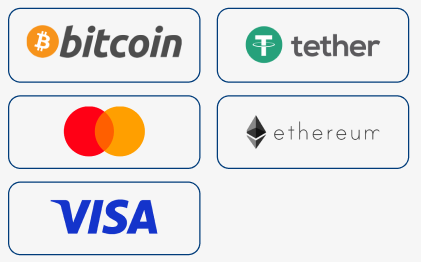In today’s fast-paced financial markets, speed and efficiency are crucial for success. That’s why many professionals are turning to automated trading to gain an edge over their competition.
Automated trading, also known as algorithmic trading, is the use of computer programs to execute trades in financial markets. These programs are designed to analyze market data, identify trading opportunities, and execute trades at lightning-fast speeds.
In this article, we’ll explore the benefits of automated trading for professionals and how it can help you stay ahead in the competitive world of finance.
The Rise of Automated Trading
The use of automated trading has been steadily increasing in recent years, with the rise of high-frequency trading and advancements in technology. In fact, it is estimated that over 80% of trades in the US stock market are now executed by algorithms.
This trend is not limited to the stock market, as automated trading is also gaining popularity in other financial markets such as forex, futures, and options. With the ability to process vast amounts of data and execute trades in milliseconds, it’s no wonder that professionals are turning to automated trading to gain an edge.
Benefits of Automated Trading for Professionals
Speed and Efficiency
One of the main advantages of automated trading is its speed and efficiency. With algorithms executing trades at lightning-fast speeds, professionals can take advantage of market opportunities that may only last for a fraction of a second.
This is especially important in high-frequency trading, where even a small delay in execution can result in missed opportunities and lost profits. With automated trading, professionals can ensure that their trades are executed at the best possible price and in a timely manner.
Elimination of Human Emotions
Another benefit of automated trading is the elimination of human emotions from the trading process. Emotions such as fear, greed, and panic can often cloud a trader’s judgment and lead to poor decision-making.
With automated trading, trades are executed based on pre-defined rules and parameters, removing the emotional element from the equation. This can help professionals make more rational and consistent trading decisions, leading to better overall performance.
Backtesting and Optimization
Automated trading also allows professionals to backtest and optimize their trading strategies. This involves running historical market data through the algorithm to see how it would have performed in the past.
By backtesting, professionals can identify the strengths and weaknesses of their strategies and make necessary adjustments to improve performance. This can help them fine-tune their strategies and make more informed trading decisions in the future.
Diversification
Automated trading also allows professionals to diversify their trading strategies and portfolios. With the ability to run multiple algorithms simultaneously, professionals can spread their risk across different markets and trading strategies.
This can help mitigate losses in case of a market downturn or unexpected events. It also allows professionals to take advantage of different market conditions and potentially increase their overall returns.
Automated Trading for Institutional Traders
While automated trading is beneficial for all types of traders, it is especially useful for institutional traders. These are professionals who trade on behalf of large financial institutions such as banks, hedge funds, and pension funds.
Institutional traders often deal with large volumes of trades and need to execute them quickly and efficiently. Automated trading allows them to do just that, with the added benefit of backtesting and optimization to ensure the best possible performance.
How to Get Started with Automated Trading
Choose the Right Platform
The first step to getting started with automated trading is to choose the right platform. There are many options available, so it’s important to do your research and find one that meets your specific needs.
Some popular platforms for automated trading include MetaTrader, NinjaTrader, and TradeStation. These platforms offer a variety of features and tools to help professionals execute trades and manage their portfolios.
Develop or Purchase Trading Strategies
Once you have chosen a platform, the next step is to develop or purchase trading strategies. If you have programming skills, you can create your own algorithms using the platform’s built-in programming language.
Alternatively, you can purchase pre-made strategies from third-party providers. These strategies are often tested and optimized, making them a convenient option for those who are new to automated trading.
Backtest and Optimize Your Strategies
Before putting your strategies into action, it’s important to backtest and optimize them. This involves running historical market data through the algorithm to see how it would have performed in the past.
By backtesting, you can identify any weaknesses in your strategies and make necessary adjustments to improve performance. This step is crucial for ensuring the success of your automated trading efforts.
Monitor and Adjust as Needed
Once your strategies are live, it’s important to monitor their performance and make adjustments as needed. Market conditions are constantly changing, and what may have worked in the past may not work in the future.
By regularly monitoring and adjusting your strategies, you can ensure that they continue to perform well and stay ahead of the competition.
Real-World Examples of Automated Trading Success
There are many success stories of professionals using automated trading to achieve impressive results. One notable example is Renaissance Technologies, a hedge fund that has been using automated trading since the 1980s.
Their Medallion Fund, which is only available to employees and their families, has achieved an average annual return of 66% over the past three decades. This is a testament to the power of automated trading when used by skilled professionals.
Conclusion
Automated trading is a game-changer for professionals in the financial markets. With its speed, efficiency, and ability to eliminate human emotions, it’s no wonder that it’s gaining popularity among traders.
By choosing the right platform, developing or purchasing effective strategies, and regularly monitoring and adjusting them, professionals can stay ahead of the competition and achieve impressive results. So why not give automated trading a try and see how it can benefit your trading efforts?






